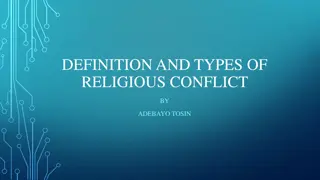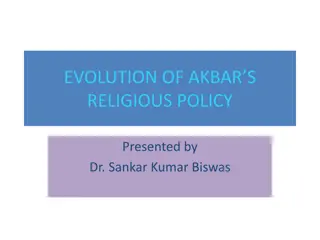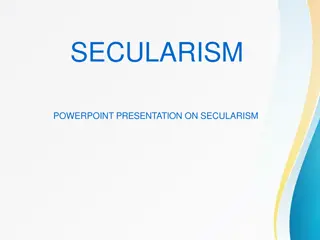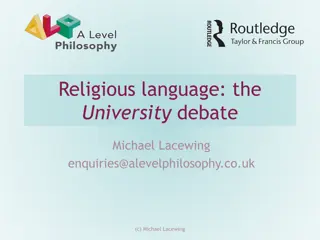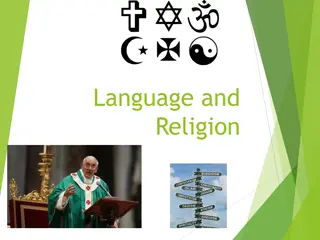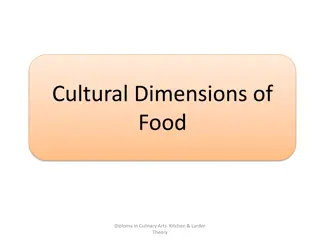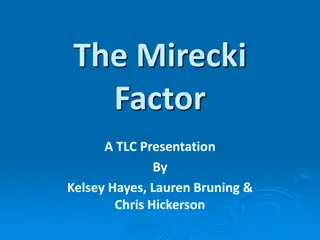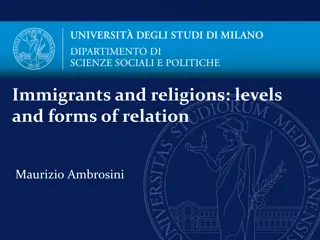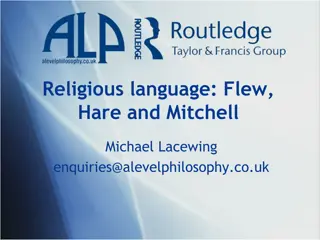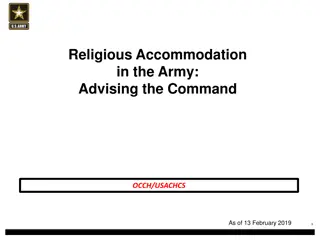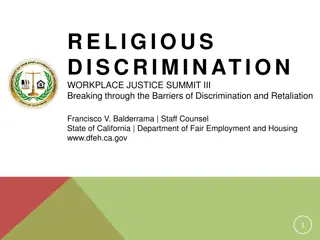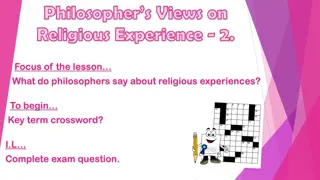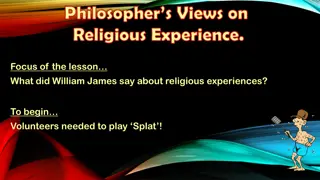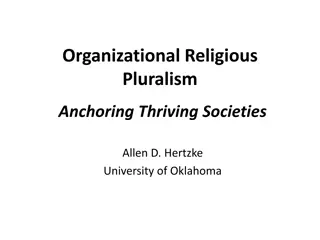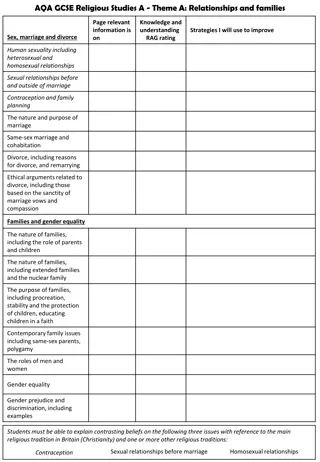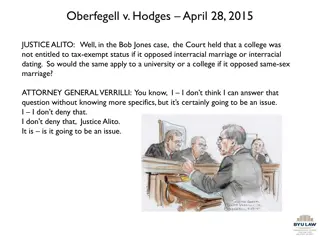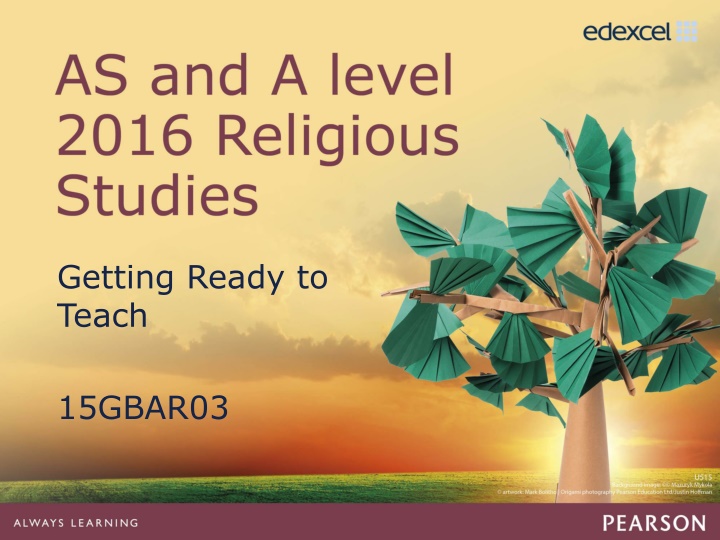
A Level Teaching Program and Reforms: Complete Guide
Explore the comprehensive agenda for a day of A Level teaching, covering topics like specification structure, assessment, and course planning. Learn about the reforms in A Level education, timeline, and resit options for the current specification. Get insights into the co-teachability of AS and A levels, qualification structure, and assessment details.
Download Presentation

Please find below an Image/Link to download the presentation.
The content on the website is provided AS IS for your information and personal use only. It may not be sold, licensed, or shared on other websites without obtaining consent from the author. If you encounter any issues during the download, it is possible that the publisher has removed the file from their server.
You are allowed to download the files provided on this website for personal or commercial use, subject to the condition that they are used lawfully. All files are the property of their respective owners.
The content on the website is provided AS IS for your information and personal use only. It may not be sold, licensed, or shared on other websites without obtaining consent from the author.
E N D
Presentation Transcript
Getting Ready to Teach 15GBAR03
Agenda Suggested programme for the day: 9.30-10.00 Welcome, registration and coffee 10.00-11:00 Session 1: Specification structure and content overview 11.00-12:00 Session 2: A Level Section A questions 12:00-12:30 Session 3: A level - Source questions 12.30-1.15 Lunch 1.15-2.00 Session 4: A Level - Essay questions 2.00-3:00 Session 5: AS level assessment 3:00-3.30 Session 6: Planning for the new course and support
Session 1: Specification structure and content overview
Inspiring Great Teaching Clear and coherent structure our qualification offers four areas of study, allowing you to choose the three you wish to teach from Philosophy and Religion, Religion and Ethics, New Testament Studies and a study of a chosen religion which will all be assessed through three externally-examined papers. Helps develop a holistic understanding of religion the specification facilitates enquiry into, and develops insightful evaluations of, ultimate questions about the purposes and commitments of human life, especially as expressed in philosophy, ethics and religion. Clear and straightforward question papers, mark schemes and assessment grids Co-teachable: We have designed our AS and A level qualification to allow them to be co-taught
The A Level Reforms All new AS and A levels will be assessed at the same standard as they are currently. All new AS and A levels will be fully linear. AS levels will be stand-alone qualifications. The content of the AS level can be a sub-set of the A level content to allow co-teachability, but marks achieved in the AS will not count towards the A level
Timeline Spec Current Specification 2015 Summer series as normal 2016 Summer series as normal First teaching (AS level and 2- year A level) 2017 Final AS resit 2018 Final A2 resit New 2016 Specification First AS examination s and first teaching (1- year A level) First A level exams The last available assessment for the current AS will be June 2017 and June 2018 for the current A2 The reformed AS first assessment is 2017 and A level is 2018
Resits for the current specification The results of the Ofqual consultation about resits for legacy qualifications was published in March 2016. It was announced that students taking legacy AS and A levels will have the opportunity to resit these qualifications after the final scheduled award, regardless of the subject. These resits will be in May or June of the following year. For Religious Studies, this means that the last resit opportunity for AS will be June 2017 and for A2 will be June 2018. Only those students who have taken the qualification previously, or who had good reason not to have taken it when planned (such as illness) can take a resit.
AS and A Level RS: Reform Subject Content Religious studies specifications at AS and A level must require students to demonstrate knowledge, understanding and skills through three of the following four approaches: Systematic Study of one religion Philosophy of Religion Religion and Ethics Textual Study
AS and A Level RS: Reform Key changes Reduction in weighting of Philosophy of Religion Three approaches from four have to be studied, ensuring that all students will cover specific religious content A new requirement to compare the writings of scholars has been added Connections need to be made between all approaches studied
AS and A Level RS: Assessment Objectives Objective AS 50% A level 40% AO1 Demonstrate knowledge and understanding of religion and belief including: religious, philosophical and/or ethical thought and teaching influence of beliefs, teachings and practices on individuals, communities and societies cause and significance of similarities and differences in belief, teaching and practice approaches to the study of religion and belief AO2 Analyse and evaluate aspects of, and approaches to, religion and belief, including their significance and influence and study 50% 60%
Our research We have worked with the teaching community, higher education, learned societies and subject associations to design our new A Level Religious Studies specifications for 2016. Our ambition has been to develop Religious Studies qualifications that you will know and recognise, and to allow you to teach topics and religions you know your students will enjoy. We have commissioned and conducted our own research, including international benchmarking and trialing. This research will help us to build on the strengths of our current specification and to identify the skills students need to progress to further study in Religious Studies.
AS and A Level RS: Key features Students are encouraged to deal with controversial ideas about beliefs and values and to have the confidence in their ability to express their own beliefs and values supported by reasoned argument and evidence Focus on exploring common ground and controversy in dealing with issues that arise in morality and religion Focus on using the writings of key scholars to explore differing viewpoints about the development of ideas Develops transferable skills of informed discussion and engagement with a range of texts for progression to higher education
A Level Religious Studies paper 1 Philosophy of Religion - Philosophical issues - Nature & influence of religious experience - Problems of evil and suffering - Philosophical language - Works of scholars - Influences and developments paper 2 Religion and Ethics - Significant concepts in issues and debates - Study of 3 ethical theories - Application of ethical theories - Ethical language - Deontology, virtue ethics and the works of scholars - Medical ethics paper 3 New Testament Studies - Contexts of the New Testament - Texts and Interpretation of the Person of Jesus - Interpreting the text and the purpose and authorship - Ways of interpreting scripture - Texts and interpretation - Scientific and historical-critical challenges paper Study of Religion - Religious beliefs, values and teachings - Sources of wisdom and authority - Practices that shape and express religious identity - Social and Historical developments - Works of scholars - Religion and society 2 hour exam 33.3% of qual Students take 3 of the 4 papers 2 hour exam 33.3% of qual Students take 3 of the 4 papers 2 hour exam 33.3% of qual Students take 3 of the 4 papers. This paper cannot be taken with paper 4B: Christianity 2 hour exam 33.3% of qual Students take 3 of the 4 papers. Paper 4B: Christianity cannot be taken with Paper 3
Component one: Philosophy of Religion - content Philosophical issues and questions: Design argument, Cosmological Argument, Ontological Argument The nature and influence of religious experience: Nature of Religious experience and its influence as an argument for the existence of God Problems of evil and suffering: Theodicies and solutions to the problem of suffering Religious language: Analogy and Symbol, Verification and falsification debates, Language games Works of scholars: Context to critiques of religious belief and points for discussion. A comparison between a critic of religion, Bertrand Russell, and a religious believer, Frederick Copleston. Influences of developments in religious belief: Views about life after death across a range of religious traditions, points for discussion about life and death, religion and science debates and their significance for philosophy of religion.
Component two: Religion & Ethics - content Significant concepts in issues or debates in religion and Ethics: Environmental issues; Equality A Study of Three Ethical Theories: Utilitarianism; Situation Ethics; Natural Moral Law Application of Ethical Theories to issues of importance: War and Peace; Sexual Ethics Ethical language: Meta-ethics; the relationship between religion and morality Deontology, virtual ethics and the works of scholars : Kantian deontology; Aristotelian Virtue Ethics and a comparison of the works of Kant and Aristotle in relation to these two themes. Medical ethics: beginning and end of life issues : Medical ethics issues with a focus on the beginning and end of life debates.
Component three: New Testament Studies content* Social, historical and religious context of the New Testament: Prophecy regarding the Messiah; the world of the 1st century and the significance of this context on the life and work of Jesus. Texts and Interpretation of the person of Jesus: The prologue of John; Titles of Jesus in the synoptic gospels and in selected I am sayings in John; miracles and signs Interpreting the text and issues of relationship, purpose and authorship: Interpreting the text; the purpose and authorship of the 4th Gospel Ways of interpreting the scripture: the Kingdom of God, conflict, the death and resurrection of Jesus: ways of interpreting Scripture, Text and interpretation: the Kingdom of God, conflict, the death and resurrection of Jesus: The Kingdom of God in Luke: parables of the kingdom and eschatology; Why did Jesus have to die?; the crucifixion and resurrection narratives in Luke s Gospel Scientific and historical-critical challenges, ethical living and the works of Scholars : Scientific and historical-critical challenges; How should we live? * Candidates who enter for Paper 3: New Testament Studies cannot enter for Paper 4B Christianity.
Component four: Study of choice of 1 of of 6 Religions Christianity* Religious beliefs, values and teachings: The nature of God as personal and as creator; The Trinity; The nature of the Church, the key moral principles. Sources and wisdom of authority: The Bible; the nature and role of Jesus Practices that shape and express religious identity : The diversity of practice in the Eucharist; the diversity of practice in creative expressions in religious identity Social and historical developments: Science; secularisation; New movements in theology Works of Scholars: Atonement theory; comparison of key ideas in the work of Karl Barth and John Hick Religion and society: Pluralism and diversity; Equality and discrimination gender * Candidates who enter for Paper 4B: Christianity cannot enter for Paper 3: New Testament Studies.
A Level Assessment Overview Each component is assessed via externally-assessed written examination comprising three sections. Students answer all questions in Section A and Section B, and choose one question in Section C. Section A Two structured questions 20 marks Section B Two extended-response questions on an excerpt from one extract from the Anthology - 30 marks Section C One extended essay question 30 marks
A Level Example Assessment Paper 1 Section A Section A: 1.Explore ideas about analogy in the design argument for the existence of God. (8) 2. Assess the debate between Copleston and Russell on religious experience as an argument for the existence of God (12)
Section A Question 1 Section A questions provide a bridge between GCSE, AS and A Level Q1 will always ask students to Explore and assesses AO1 Students are required to recall the main features, incidents or principles, but are not expected to show in-depth knowledge and understanding.
Section A Question 1 and MS 1. Explore ideas about analogy in the design argument for the existence of God (8) Indicative content: meaning of the term analogy there are analogies (similarities) between order in the world and man-made machines such as a watch there is evidence of analogies (parallels) between order in the human body such as the eye the experience of order over time as in laws of nature and analogically between man-made machines analogical reasoning leads to links between experience of man-made machines and the origin of order in nature, namely God.
Section A Question 2 Q2 will always ask students to Assess and assesses AO1 and AO2 For AO1, students will be required to demonstrate knowledge and understanding For AO2, students will be required to develop their answers showing analytical and evaluative skills. AO2 will be underpinned by AO1. Assess therefore requires a justification or exemplification of a point. The answer must contain some linked reasoning.
Section A Question 2 and MS 2. Assess the debate between Copleston and Russell on religious experience as an argument for the existence of God 4 marks AO1; 8 marks AO2 Candidates may refer to the following in relation to AO1: meaning of religious experience, including mysticism a feature of the argument is arguing from mental states to something outside of us best explanation is that there is an objective cause of religious experience
Section A Question 2 and MS 4 marks AO1; 8 marks AO2 Candidates may refer to the following in relation to AO2: problems of the interpretation of experience and therefore may be unreliable religious experiences may have a good effect on a person s life with a presumption of its truth and therefore a test of its veracity evidence of fictional cases who influence people for the better and hence this does not provide evidence of an objective source tensions between competing explanations with therefore little common ground of testing the various options
Section A Question 2 and MS Level Mark Descriptor 0 No rewardable material Level 1 1-4 A narrow range of knowledge, specialist language and terminology are selected but are unlikely to be used appropriately or accurately (AO1) Information/issues are identified (AO2) Judgements are supported by generalised arguments (AO2) A range of knowledge, specialist language and terminology are selected most of which are used appropriate with some inaccuracies (AO1) Deconstructs religious information/issues which lead to a simplistic chain of reasoning (AO2). Judgments of a limited range of elements in the question are made (AO2). Level 2 5-8 Level 3 9-12 A wide range of knowledge, specialist language and terminology are carefully selected and used appropriately, accurately and sustained throughout (AO1). Critically deconstructs religious information/issues leading to coherentand logical chains of reasoning (AO2). Constructs coherent and reasoned judgments of the full range ofelements in the question (AO2).
To recap: what do we mean by explore, and assess ? Explore: Demonstrate understanding by investigating different reason, concepts and ideas (AO1) Assess: Requires reasoned argument of factors to reach a judgement regarding their importance/relevance to the question context. (AO1 and AO2)
Activity 1: write possible Section A questions Ensure you have blank paper, pen, a copy of the specification and a copy of the SAMs Select one section of the specification that you are likely to teach Select a topic in that section Attempt to write two questions for that topic Swap it with the person next to you to check
Session 3: A Level - Source questions
A level - source questions A fine brash hypothesis may be killed by inches, the death by a thousand qualifications. It seems to people who are not religious as if there was no conceivable event the occurrence of which would be admitted by religious people to be a reason for conceding There wasn t a God after all. Someone tells us that God loves us as a father loves his children. But then we see a child dying of inoperable cancer of the throat. His earthly father is driven frantic in his efforts to help, but his heavenly Father reveals no signs of concern. Some qualification is made God s love is not merely human love . But then we ask: Just what would have to happen to entitle us to say God does not exist ? A believer s statement has been so eroded that it is no longer an assertion at all. (Quote from 'The Philosophy of Religion', Flew A, Editor: Mitchell B, by permission of Oxford University Press) 3 (a) Clarify the ideas illustrated in this passage about falsification in religious language (10) (b) Analyse the implications for religious language from this passage. (20)
Section B Question 3 Q3 will always be based on an extract from a text from the anthology. Question 3a) will require students to clarify the key facts and ideas presented in the passage Question 3b) assesses AO1 and is marked using a levels based mark scheme Question 3b) will ask students to analyse and make arguments connected to the question. Question 3b) assesses AO1 and AO2 and is marked using a levels based mark scheme
What do we mean by Clarify and Analyse ? Clarify: Identify key ideas and explain key concepts (AO1). Analyse: Deconstruct information and/or issues to find connections, and provide logical chains of reasoning (AO1 and AO2) Where will the source be drawn from? In each component there is a list of extracts that fit with different topics. We have provided a free online Anthology which includes the extracts from which these sources will be drawn.
A Level Anthology It is compulsory for students to compare the work of two named scholars, including a specific extract of their work. The list of extracts must be studied by all students and this includes the work of two named scholars for comparison. These are published in the GCE Religious Studies Anthology which can be downloaded from the Pearson website: qualifications.pearson.com. The context in which these texts could be studied is indicated by bracketed numbers in the detailed content, (1) for example. These extracts are not exclusive to the topic areas under which they appear; students will need to be able to apply these extracts across any suitable topic. This allows for a range of questions, including text or language specific, as well as thematic.
Example of Extracts: Paper 2 - Ethics Barclay, W Ethics in a Permissive Society, Chapter 4 Situation Ethics, pp.69-91 Kant, I Groundwork for the Metaphysics of Morals, pp. 29-53 Aristotle The Nicomachean Ethics, pp.23-37 Wilcockson, M Issues of Life and Death, Chapter 4 Euthanasia and Doctors Ethics, pp.56-69.
Lunch We will resume for session 4 at 1.15
Session 4: A Level - Essay question
A level - Essay question Section C Section C: 4. Evaluate the strengths and weaknesses of the belief in immortality of the soul and reincarnation. In your response to this question, you must include how developments in Philosophy of Religion have been influenced by one of the following: Religion and Ethics New Testament Studies the study of a religion (30)
A level - Evaluation and synopticity Evaluate Review/analyse information, bringing it together to form a conclusion/judgement based on strengths/weaknesses, alternatives, relevant data or information. Come to a supported judgement of a subject s qualities and relation to its context. Synoptic Links The last part of the question requires a link to be made with any of the other components studied. For example, in Q4 on the previous slide: a belief in life after death may influence ethical principles ,such as the sanctity of life, and this type of principle may therefore be associated with debates about abortion and euthanasia (this shows links with Religion and Ethics) these belief systems can be compared to New Testament teachings about resurrection and therefore may be used to assess the distinctive nature of these respective beliefs (this shows links with New Testament Studies) many religious traditions believe in life after death, although there may be some similarities and some substantial differences between their beliefs. For example, Islam presents beliefs about resurrection related directly to the Day of Judgement and the authority of Allah. Therefore this is significantly different from the belief in immortality of the soul (this shows links to Study of Religion).
Activity 2: Essay question exemplar Ensure you have paper, pen, a copy of the specification, a copy of the SAMs and a copy of the exemplar Write notes on the exemplar- we will then go through it Check your assessment of the exemplar with the trainer and the person sitting next to you
Exemplar opening paragraph Evaluate the strengths and weaknesses of the belief in immortality of the soul and reincarnation.. Within philosophy it is a universally shared belief that our earthly bodies will one day come to an end, and although all philosophers believe this, they do not, however, all share the same view on what happens to our soul once we die. Two beliefs of life after death are reincarnation, the Hindu belief that your soul is reborn into another physical body, and immortality of the soul, a dualist and Christian view that your body is mortal but your soul is immortal and will continue on after death. Both of these beliefs put forward strong key features and I will be exploring and comparing both
AS Level Religious Studies paper 1 Philosophy of Religion - Philosophical issues - Nature & influence of religious experience - Problems of evil and suffering paper 2 Religion and Ethics - Significant concepts in issues and debates - Study of 3 ethical theories - Application of ethical theories paper 3 New Testament Studies - Contexts of the New Testament - Texts and Interpretation of the Person of Jesus - Interpreting the text and the purpose and authorship paper 4 Study of Religion - Religious beliefs, values and teachings - Sources of wisdom and authority - Practices that shape and express religious identity 1 hour exam 33.3% of Qual 1 hour exam 33.3% of Qual 1 hour exam 33.3% of Qual 1 hour exam 33.3% of Qual Students take 3 of the 4 papers Students take 3 of the 4 papers Students take 3 of the 4 papers. This paper cannot be taken with paper 4B: Christianity Students take 3 of the 4 papers. Paper 4B: Christianity cannot be taken with Paper 3.
AS Level Assessment Overview Each component is assessed via externally-assessed written examination comprising three sections. Students answer all questions in Section A and choose one question in Section B. Section A Three structured questions 26 marks Section B One, two part essay question 28 marks
AS Level Section A Section A: 1. Explore key ideas about the nature of religious experience (8) 2. Assess the strengths of the ontological argument for the existence of God. (9) 3. Assess the strengths of the design argument for the existence of God. (9)
AS Level Essay Question 4 (a) Explore the key ideas associated with the problem of suffering. (8) (b) Analyse the success of one solution to the problem of suffering. (20)
Essay questions AS Level For AS, the section B questions are split into two parts Part (a) will require students to explore a key concept or idea Part (b) will then require students to analyse this key concept or idea to find connections and provide logical chains of reasoning. Part (a) assesses AO1 and part (b) AO1 and AO2
Activity 3: Essay plan Ensure you have blank paper, pen, a copy of the specification and a copy of the SAMs Select one section of the SAMs that you are likely to teach, select a question in that section Write notes that could be used to structure an essay plan. You are free to work together. Your trainer will circulate and offer pointers as needed Swap it with the person next to you to check
Session 6: Planning for the new course and support
Co-teaching AS and A Level We have designed the AS and A level qualifications, so they can be co-taught: The AS has the same number of unit choices as the A Level The first three content bullet points are the same for AS and for A Level The assessment follows a common pattern of shorter answer responses and essay questions
Activity 4: High Level planning Look at the content bullets for each paper for AS and A Level in the specifications. Think about the crossover of content and which papers you are likely to teach. Using the blank planning sheet draft a possible 2 year plan for your department / class Discuss your plan with a colleague


